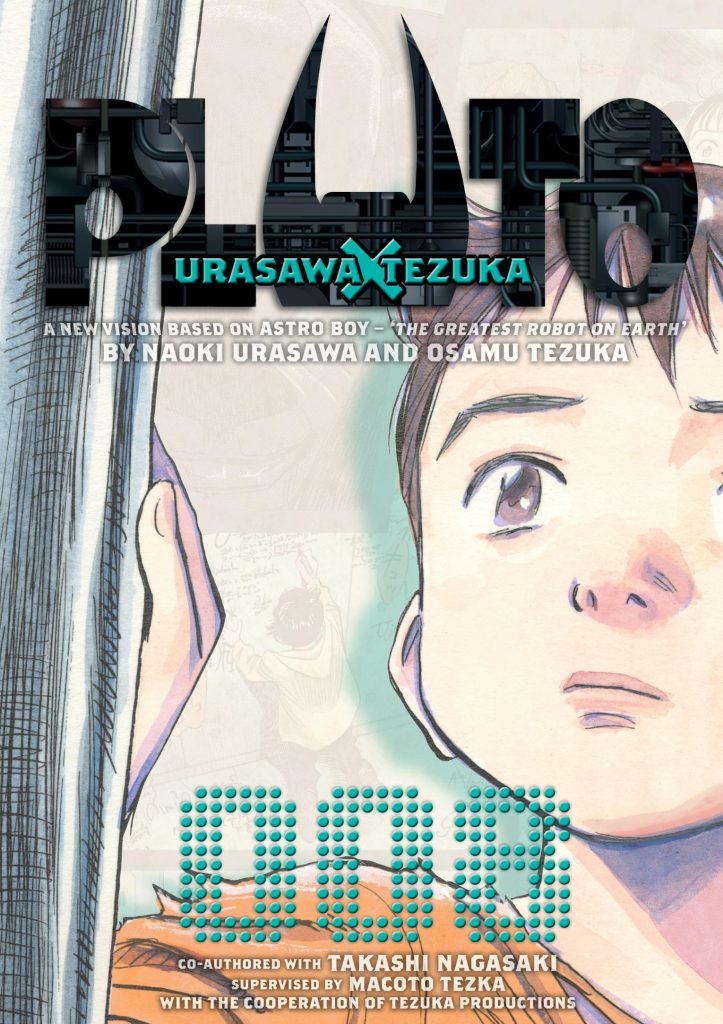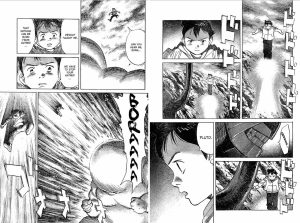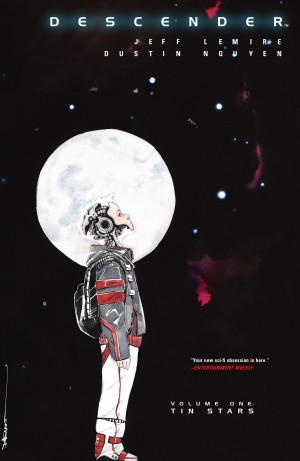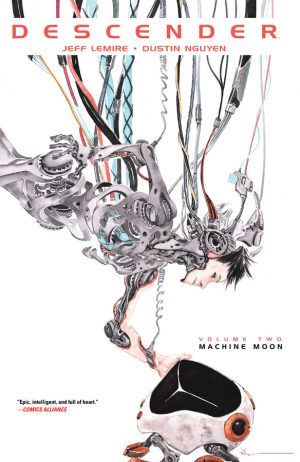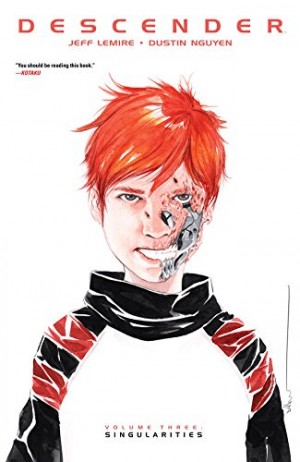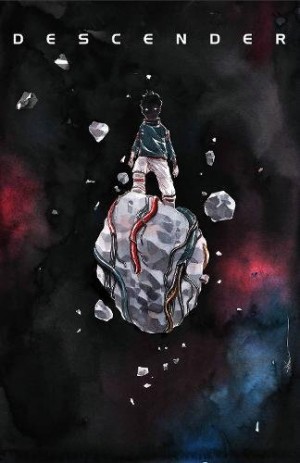Review by Woodrow Phoenix
If you have any tears left, prepare to shed them several more times in the final volume of Pluto as we see for the last time how the 39th Central Asian Conflict has warped everyone exposed to it, whether on the losing or the winning side. Pluto could be read as a meditation on grief, extending Osamu Tezuka’s tragic origin for Astro Boy/Mighty Atom as the recreation of a dead child who is rejected for failing the impossible task of healing his creator’s devastated heart. As seen in Vol. 7, loss and grieving affect human and robot equally. All have witnessed or committed dreadful acts, and all are haunted by them. The humans wish they could forget, but cannot. The robots could have their memories wiped, but they choose not to in order to try and understand the emotions that humans feel.
In Vol. 1 we are introduced to an important aspect of this world of advanced AI: all robots have a removable ‘memory chip’ in their heads which records everything they see and hear, and perhaps more importantly, everything they think and feel too. If a robot could be said to have a soul, Doctor Tenma says, this is where it resides, but these souls are not private and unknowable like human souls. Instead they are like the black box recorders of a 747 jet airliner: accessible to anyone with the software to read them. A robot who inserts another’s memory chip will access the entire life history of the first robot in complete detail. Rather than have to explain or describe an event, robots simply exchange chips and one will relive an occurrence just as the other experienced it. This becomes key to the most powerful parts of this narrative as the swapping of memory chips enables each surviving robot to understand what happened to their friends and comrades, to piece together their isolated experiences into a complete picture, and to identify their assailant. Their sharing of souls not only extends their personalities beyond their individual deaths, as it is the last desperate way to return Atom to life with his final deep understanding of just what is needed to avert global catastrophe.
Pluto is a wonderfully plotted story. The directions it takes to arrive at its final destination are so ingenious that if you want to enjoy it fully, try not to read any plot summaries, including the ones on the flaps of each book. Just dive in for the rarest of experiences where the intricate writing is more than matched by the beautiful drawings. Naoki Urasawa supplies fluid and expressive character designs that allow you to see and feel the subtlest of emotions in protagonists, layouts that fizz with energy, rendering that gives the drawings authority and dynamism, inventive and breathlessly unpredictable action sequences. This is a magnificent achievement on every level from a creator working at the height of his abilities.
Previous fans of Tezuka – and of course, Urasawa – will be as enthralled as any new reader completely unfamiliar with manga. In his afterword co-writer Takashi Nagasaki tells how he and Urasawa decided what the message of ‘The Greatest Robot on Earth’ is: “We were grappling with the unavoidable question of what Osamu Tezuka would have focused on if he were alive today. ‘War’ immediately came to mind … having experienced battle, Atom was the first robot in history to understand the meaninglessness of war. That’s what he was trying to say.”
